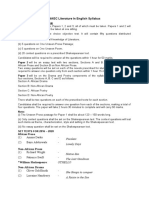0% found this document useful (0 votes)
27 views22 pagesPython Interview Preparation
The document provides a comprehensive guide for Python interview preparation, covering essential topics from basic to advanced levels, including data types, control structures, OOP, and libraries relevant for AI roles. It emphasizes the importance of understanding Python fundamentals, problem-solving techniques, and efficient coding practices. Additionally, it lists expected interview questions and detailed answers to common queries about Python features and functionalities.
Uploaded by
sanskruti.sugandhi4Copyright
© © All Rights Reserved
We take content rights seriously. If you suspect this is your content, claim it here.
Available Formats
Download as PDF, TXT or read online on Scribd
0% found this document useful (0 votes)
27 views22 pagesPython Interview Preparation
The document provides a comprehensive guide for Python interview preparation, covering essential topics from basic to advanced levels, including data types, control structures, OOP, and libraries relevant for AI roles. It emphasizes the importance of understanding Python fundamentals, problem-solving techniques, and efficient coding practices. Additionally, it lists expected interview questions and detailed answers to common queries about Python features and functionalities.
Uploaded by
sanskruti.sugandhi4Copyright
© © All Rights Reserved
We take content rights seriously. If you suspect this is your content, claim it here.
Available Formats
Download as PDF, TXT or read online on Scribd
/ 22























































































